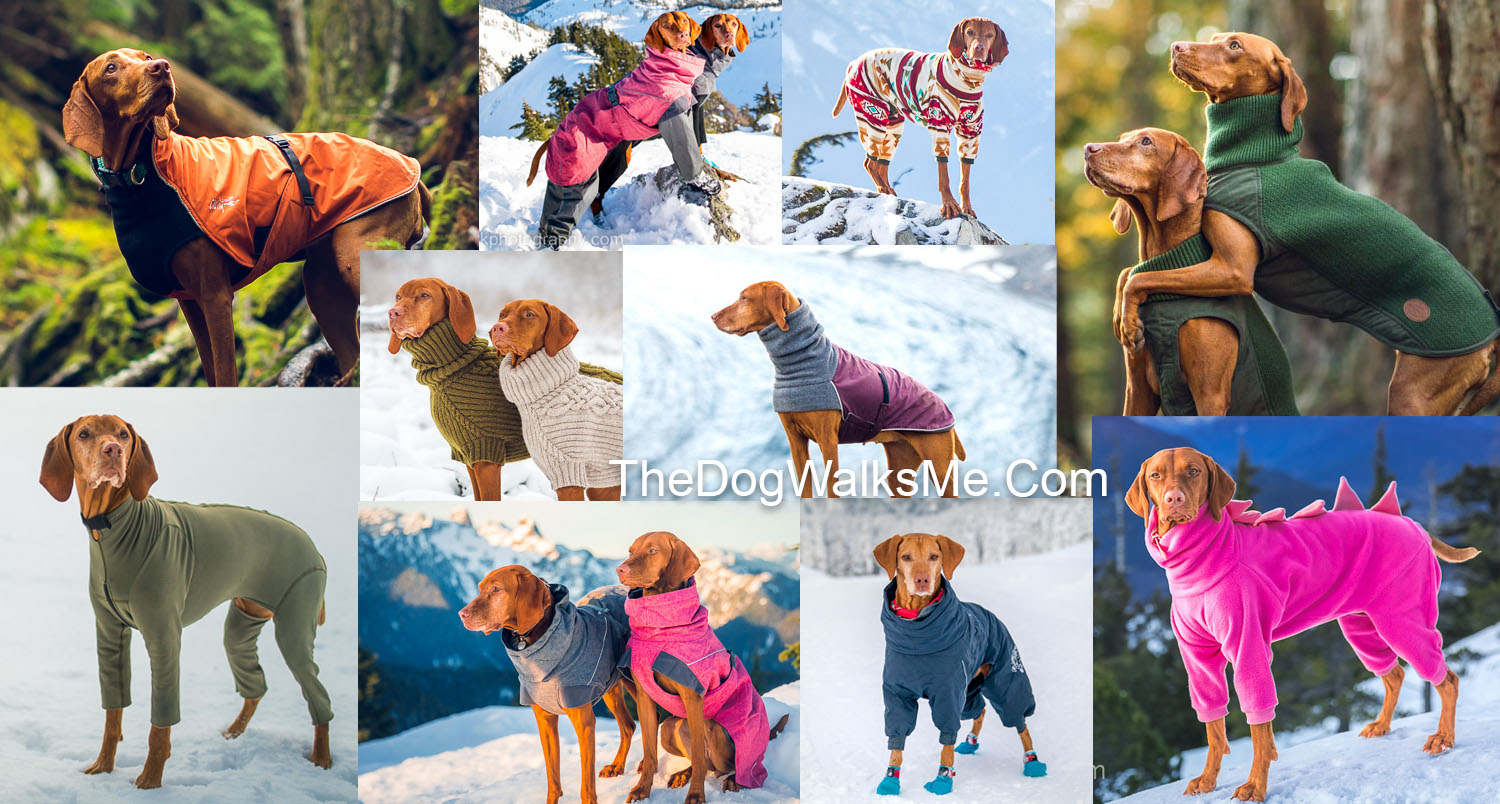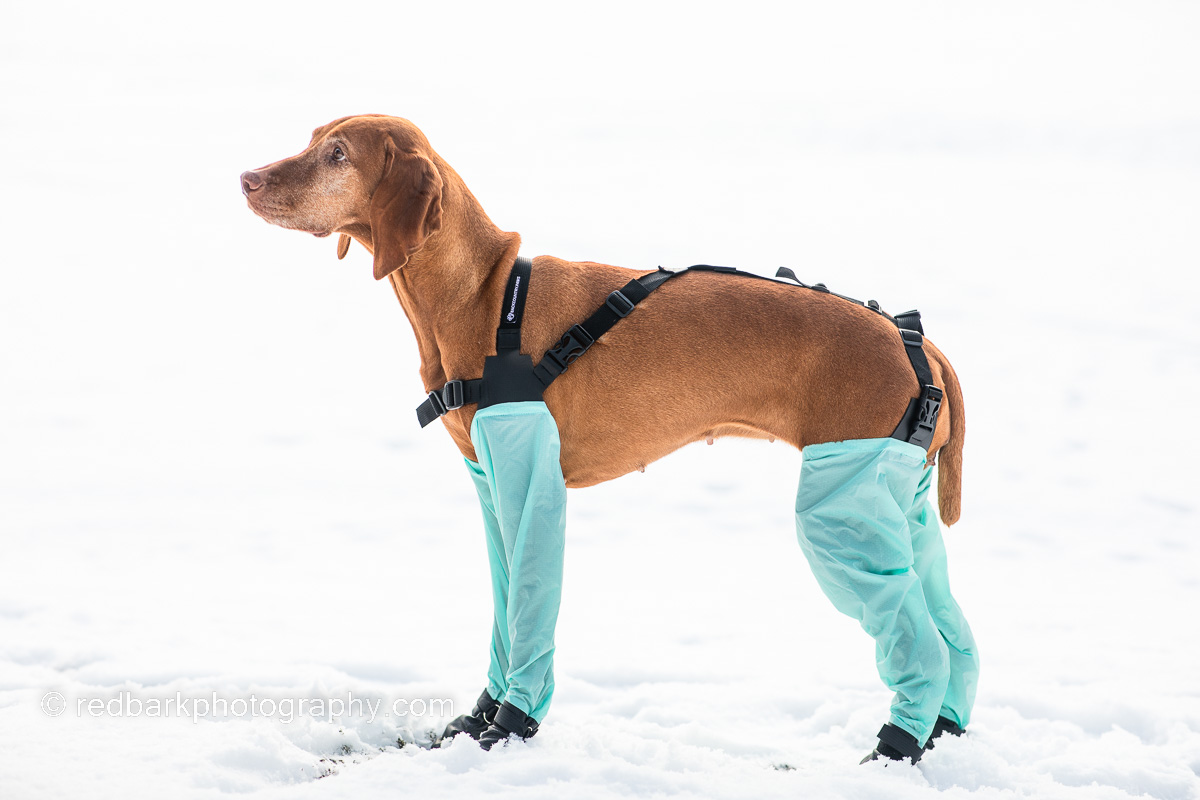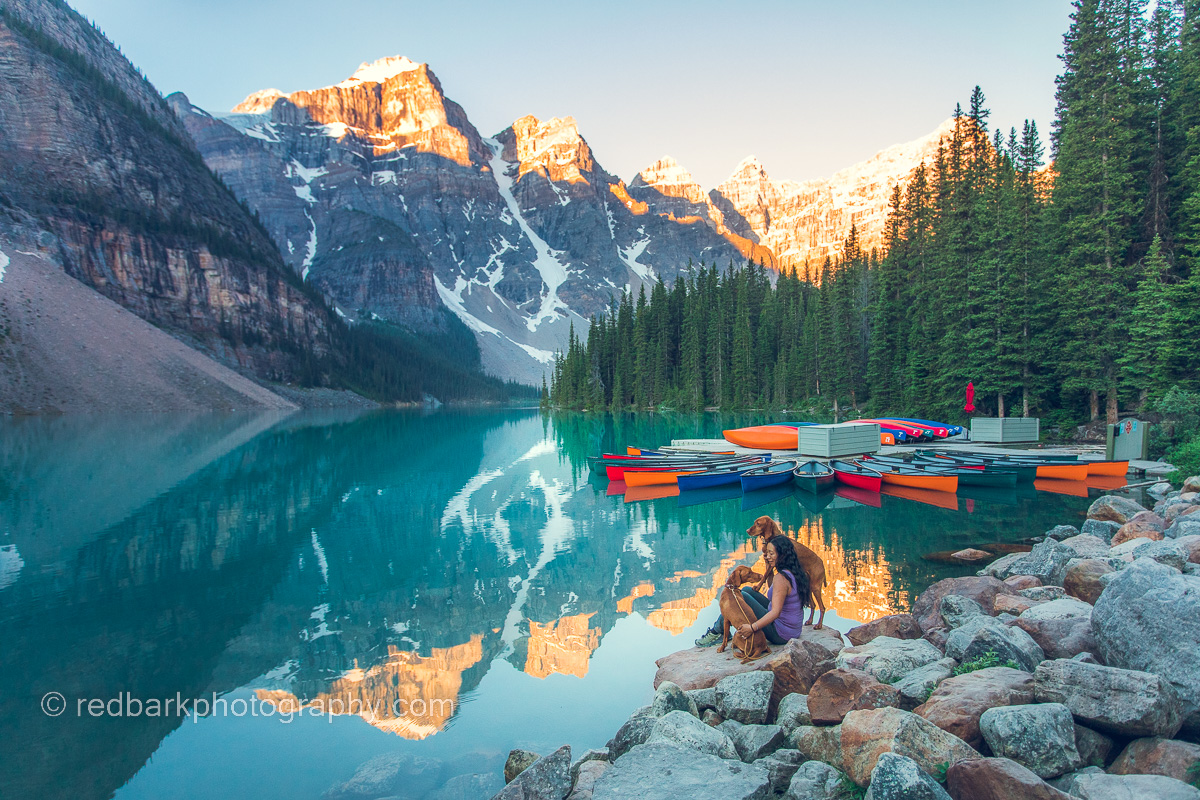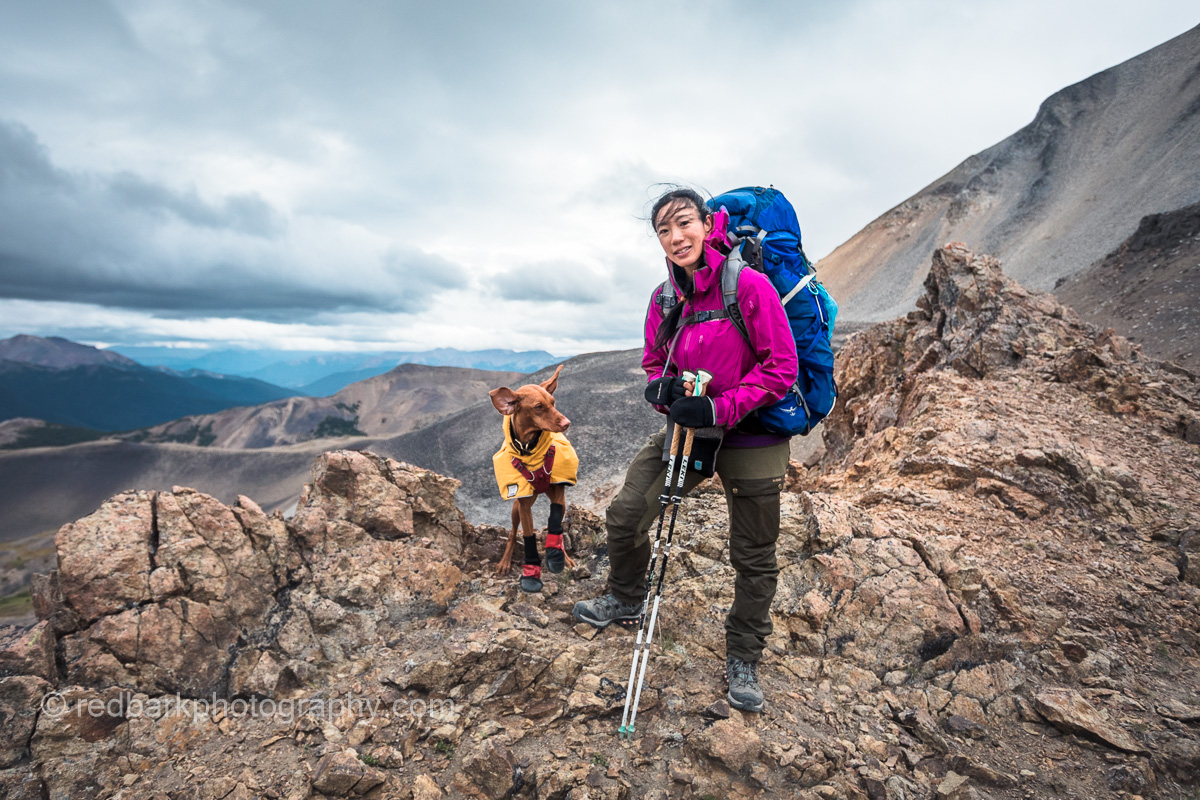Are you confused with the amount of options of canine jackets and sweaters available on the market? Or maybe you’ve tried several and find nothing fits your skinny long dog properly? There is such a variety of dog breeds from short and stout to long and lean and unless your dog magically fits the “standard” size it can be hard to find something that fits and stays on an athletic crazy running machine. We’ve tried so many different options and this is what I’ve learned.
Velcro vs Buckles vs Zippers
This is a big point of difference in choosing a jacket. Ideally you find a jacket with the least amount of connection/adjustment points. This can be counterintuitive as the more adjustment points, the easier it is to get a good fit right? Perhaps, they’re more adjustable, however these jackets will rub more, and will also come off easier with an active playing dog. Jackets with 3-5 Velcro panels are the bane of my existence. They look awful and these panels will come off easily over time.

Velcro is great for easy of use and quickness, for fitting different dogs without adjustment, and for not rubbing or chaffing on the pup. The downside to Velcro is that it can come off with thick brush, with deep snow collecting, and with rough play. Velcro also degrades with use, especially the cheaper Velcro (there’s a huge difference in quality) so make sure that Velcro jackets are high quality if you want them to last.

Buckles solve alot of Velcro issues such as inadvertently coming off after rubbing past bush, or a dog pulling the panel with play. Buckles snap easily and can adjust with straps. Sometimes buckles are used in conjunction with Velcro for the best of both worlds. The problem with Buckles is that they don’t have a clean profile, they can rub or get in the way with harnesses, and they’re a small point of connection so jackets have to be structured well in order for them not to unravel or lose shape.

Zippers are a very clean look and connect a large panel of fabric together. They’re wonderful not coming apart or wearing out, however they are not adjustable so the fit has to be somewhat perfect for only a zipper to be used in a jacket

Finally, there are jackets and sweaters that do not have any attachment points and depend on the jacket fitting perfectly to the dog to not fall off. I love these the best, but they are the hardest to find and fit as your dog grows and changes!
Fit for skinny dogs- length vs chest
Fitting jackets on different shaped dogs are difficult. I find most of the mass produced clothing fit a stout, somewhat rounder and and shorter dog than mine. I’ve had to find specialty dog clothing to fit my Vizslas, or just accept that the length will be shorter and the stomach panel barely covering. These jackets usually twist on the dogs as they run, or leave their backs and stomach open to the elements.
Here’s a list of dog companies that make long/skinny/lean dog jackets, many of these are custom
Voyagers K9 Apparel
Our most used rain jackets and winter jackets come from this brand. They are breed-specific fits and are easy-on easy off with Velcro. There are two Velcro straps which really help keep the jacket on crazy dogs and it’s great quality (I have much experience with sewing and Velcro). The fleece is also very high quality and extra thick. No matter the amount of washing these jackets have gone through, they haven’t seemed to degrade.
Voyagers is run by an American family with the mother sewing all the jackets and they can be custom to your own dog for an extra fee. There can be added harness holes and custom shapes for an oddly shaped dog. Although puppy teeth and barbed wire will tear the fabric, it holds up much better than other cheaper jackets. *wash these jackets with tech wash

Chillydogs.ca
These jackets (the standard option) fit Vizslas perfectly. They also have long and lean (greyhounds) and another cut for short and broad dogs (Bullies). The jackets use both buckles and Velcro, and are quick to put on, never coming off because of the buckle. The winter option covers the front of the chest and has a fleece-lined shell for added wearability. The neck is a bit shorter and less thick fleece than Voyagers but there is the chest panel and buckle. I find the Alpine Blazer to be a great all-round jacket for those days that aren’t too cold, or too wet but just chilly enough to need a jacket.


Hurtta
Hurtta is a company from Finland that have recently expanded to North America. They have some really interesting products that I haven’t seen elsewhere. I especially love the Eco line that uses 100% recycled polyester fabric. Not all Hurtta jackets fit skinny/lean/hairless dogs well but the ones that do are keepers!
Hurtta’s Expedition Parka was made especially for lean dogs without undercoats like Vizslas. The fabric hugs the dogs (vs a shell that leaves so much air between jacket and muscles) and includes adjustment points as well as a snow trap on the neck that really keeps heat in. There’s a fully chest panel, and the jacket is coated with water wicking properties (not fully waterproof but fine with snow). The jackets use only one buckle but stay in place really nicely.
Another jacket I love and use is the Extreme Overall. This one is the warmest one-piece clothing I have for the dogs. It’s good for about -15 (once it gets to -20 for 5 hours we switch to layers). The overalls take a bit of time to put the dogs in, but there’s many adjustment points and they fit the dogs well.


Vizsla Tea
This is the only brand I haven’t tried but I would recommend if you’re in Europe. I’ve heard good things and they’re made specifically for the Vizsla breed.
K9topcoat
I’ve more recently been using K9Top Coat in the winters. Because of our wet and cold climate, we’ve been using the Weatherproof Bodysuit that has the most water-repellency. I haven’t tried the other suits they make, but there are lots of options for dogs that have allergies, injuries, etc. The weatherproof suits have fitted my Vizslas very well (cut the legs off higher or they will snowball). They’re perfect for layering underneath jackets and for camping.

Bravehound/Redbarkshop
If style is what you’re looking for, look no further than Bravehound. These are custom made with Vizslas in mind. I sell them in my shop with the measurements taken from 100s of Vizslas in 5 sizes. The sweaters are hand-knit and stretch perfectly as the dog breathes and runs.
I’ve never been able to find a sweater that actually fit the length of a Vizsla and stretched nicely over their chests so I started bringing these in for sale. There’s a hole for a collar, and my oldest sweater is still lasting nicely, although these aren’t for rough play or running through the bush (They’ve survived all that, but I try not to!). Also machine washable (all the jackets on this list are!), and finally 100% wool.
There’s also a more fitted vest for sports in the winter and keep the dogs warm. The Bravehound wool gilet is zippered and allows for easy sprinting while keeping the dogs warm (perfect for Cross Country Skiing).


Threadzntails
You cannot find better fitting onesies (and other shapes) as these are made custom to your dog’s size. They even have matching human hoodies if that’s your thing! Everything is custom to exactly what you want, including collar style, legs, stomach paneling (girls and boys), and fabric type and color or design. For the customization I think the pricing is extremely fair. Since there are no zippers or Velcro, these are very easy to wear, but take a bit of time to slip on. I have friends that are addicted to getting these as they’re so fun to design yourself.

Puppies

For puppies I always suggest getting something second-hand to last for the first half-year. The jackets I recommend are not cheap, and unless you want to splurge (or have an ongoing amount of puppies in your household) it may not be money well spent. Puppies also have shark-teeth and are pretty unforgiving in their playing and tumbling so it can be best to wait until after they stop shredding everything in sight. Whiskey had a cheap $8 jacket that was torn and handed down to someone else after she outgrew it.
Price and Longevity
As with most things, you tend to get what you pay for. I’ve tried the cheaper mass-produced clothing out there and as well as being poorly fitted, they do not last very long. Whiskey isn’t a hard playing dog, but we’ve ripped several jackets and worn out the Velcro in others. Other times the jackets with tiny stomach panels (many just have a strap) cause the jacket to fall to one side and just get trampled or torn. I love jackets that last, fit perfectly, and look great!
Rain and Waterproofness

I find most jackets that are “waterproof” or “weatherpoof” will not actually keep a dog dry for 3 hours in a downpour, or wet snowfall. Now, I’m assuming most people do not take their dogs in drenching conditions hiking, but it’s a really good way to test waterproofness in dog jackets. The most waterproof Dog Jacket we’ve found is the Voyagers K9 Apparel. They’re the only ones that have stood up to pouring conditions and are still fully waterproof years later.
Since I take out multiple dogs at a time, I will use all the jackets I have, and Voyagers consistently keeps the dog dry compared to others. However, nothing will keep Bourbon warm and dry when she jumps in and swims after ducks in the winter… I also highly suggest keeping your jackets (no matter the brand) clean and using a proper “tech” wash to clean the jackets and keep them as waterproof as possible
Snow and ice

You make think any jacket that is warm should be fine in the snow, however I’ve found some are much better than others. If snow is going to touch the jacket, it can collect inside (especially those with dogs that like to swim in snow) and it can also cling to certain fabrics, and with body warmth, melt, then turn into ice. There are certain pieces that can freeze up and ice over rubbing the dogs as they run.
Anything with a stomach panel, especially one that covers the front of the stomach will collect snow with a swimming dog. An example is the Hurtta Expedition Parka. As much as I love this jacket, if Bourbon runs through deep snow, the snow will collect and stay in the chest, and then melt and hold iceballs next to her stomach. The Chillydogs winter jacket is similar in this way. This isn’t a problem for running around in packed snow, leashed walks, and dogs that don’t enjoy swimming.
I’ve also noticed the Hurtta Overalls legs get icy, as well as the k9topcoat weatherproof bottom legs get iced up. The best option I’ve found for cold legs that need coverage is using the backcountry gaiters.
Citywear and Loungewear

It can look ridiculous but these dogs do get cold and sweaters or onesies are really amazing! They’re wonderful underlayers, and great if you keep your dogs in a cold car for competitions or roadtrips, for car camping in the winter, cold cabin days, or just an on-leash walk in the city. Perhaps you have a calmer senior dog that chills quickly with arthritis, have a dog recovering from injury, or a dog that refuses to potty when it’s cold outside? A warm sweater or jacket can be wonderful!
Lifejackets for Dogs

There are not too many companies that make dog lifejackets, but here’s a couple to check out.
Ruffwear – Our favorite that we’re currently using, easy adjustments, hidden straps. The biggest selling point is the front strap, where most jackets are thin and can come out of place, Ruffwear has a thicker front band and the strap doesn’t chafe
Hurtta – I have not tried but I trust this company
Outward Hound – A lower price point, I just don’t love the strap system, but works great
Kurgo – I haven’t tried this one, but Kurgo is a well trusted brand
Dog Life Jackets are really area dependent (where you can buy them) but I would advise for less straps flapping around and more coverage, You want to be able to lift your dog in any position from the handle and not have your dog fall out or chafe. It’s also really helpful to have a leash attachment point. Since your dog’s life may depend on the life jacket working, I wouldn’t get something cheap off Amazon.

Hunting/protective
I don’t have much information on protective wear for hunting but guess who does… Accidental BirdDog! Her blog posts have loads of information on hunting and this one covers some protective clothing for hunting dogs.
Layering- protective and cold

We are masters at layering! Hiking in the mountains, and backcountry camping involves adjusting and changing to the weather. I normally carry a couple pieces of clothing for the dogs when we are backcountry camping and layer as needed. Sometimes in the winter, we will start on a warm day and the clouds and snow and wind will come in on the peak and I’ll have to redress the girls right on the trail in order for them to survive.
Do not be shy from layering, even if it looks ridiculous. I typically like a onesie/tights underneath a warm jacket, and some sort of boots if needed. Dog Googles are great if the wind really picks up and starts shooting snow at your face. If you can barely open your eyes in the wind, your dog will appreciate googles (but these do take training to wear).






























































































